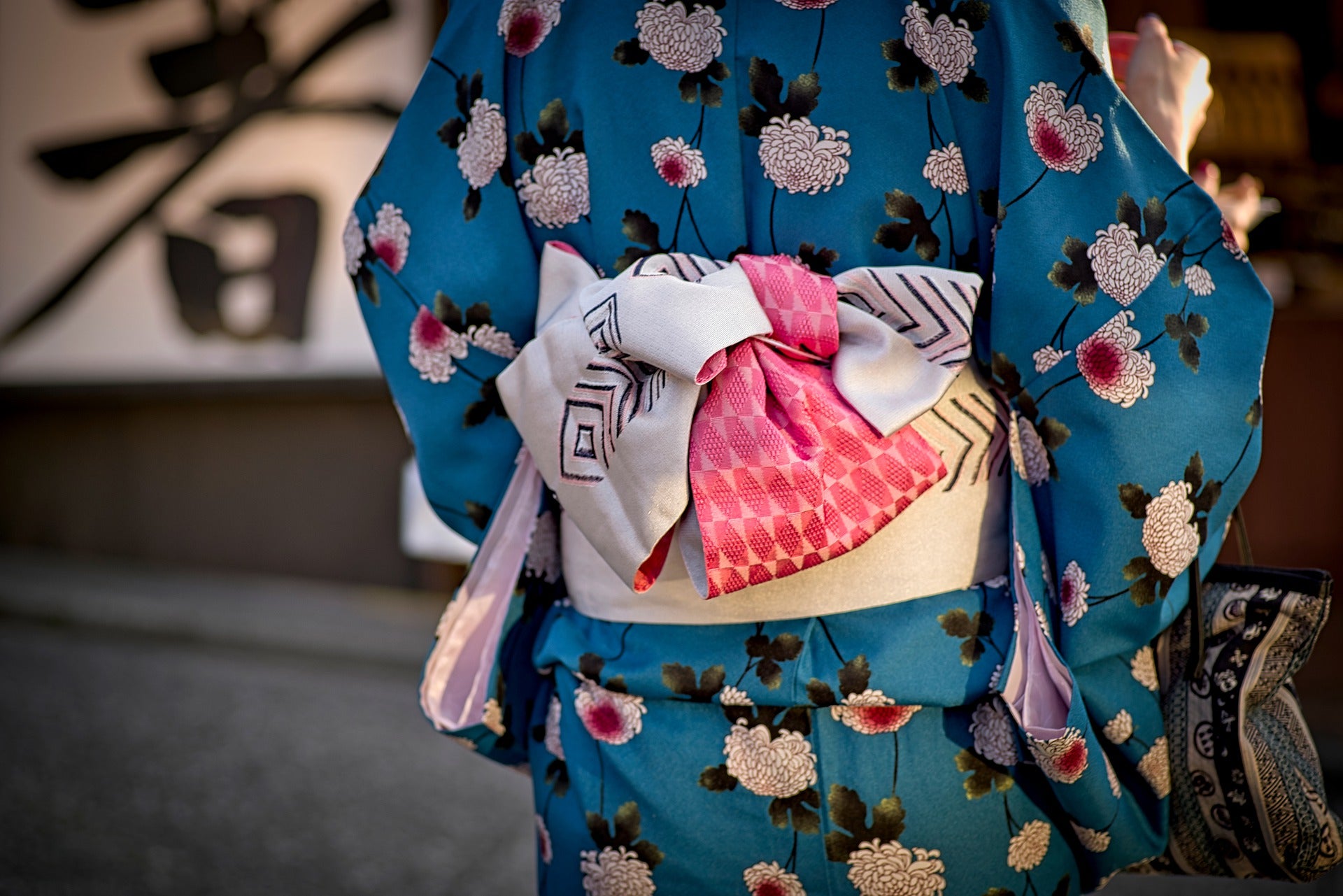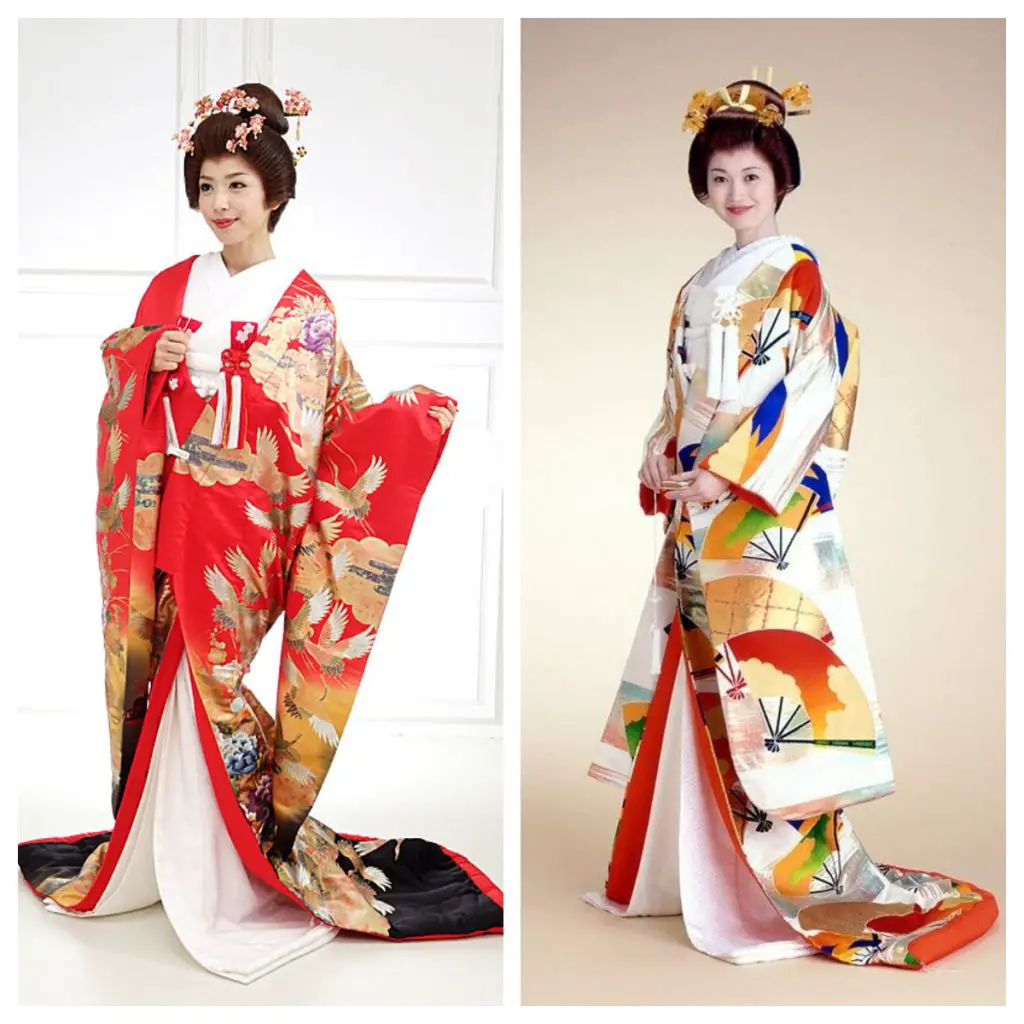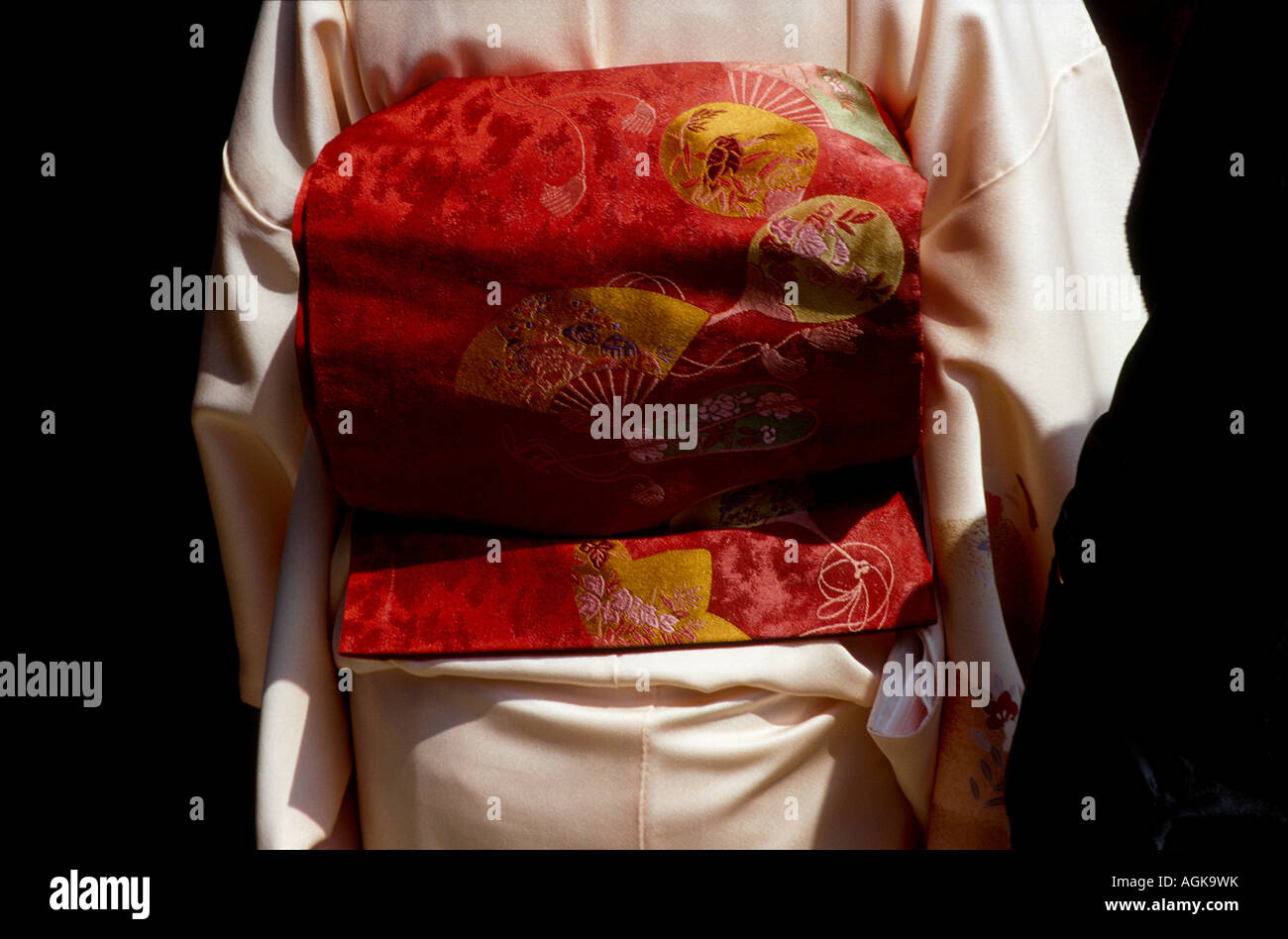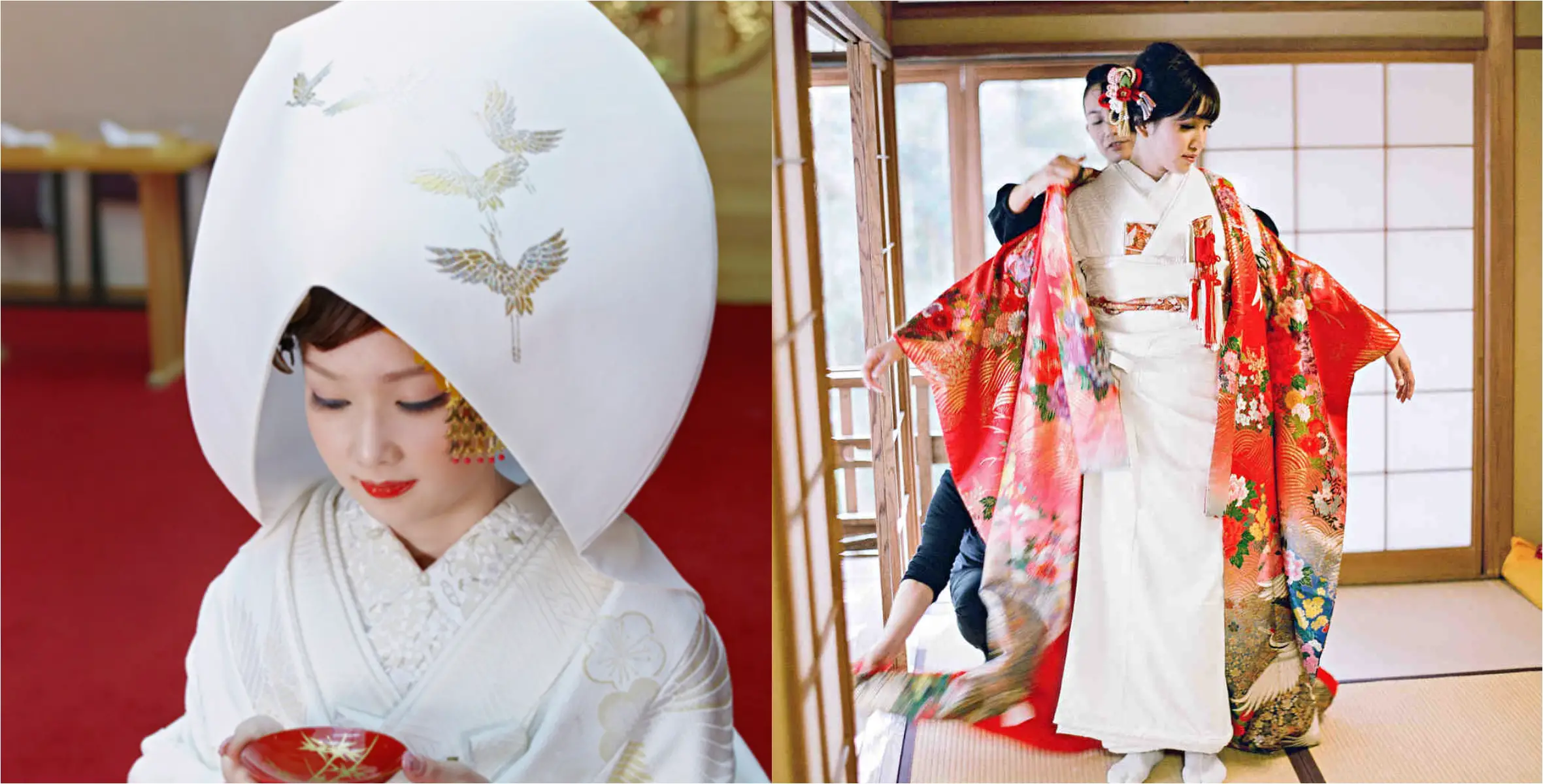
Japanese brides in traditional dress wear a white kimono (Shiromoku) and an elaborate hair style - usually a wig and tsuno-kakushi headress Stock Photo - Alamy

Guaranty Trust - #TodaysFashionTerm: The "Kimono" A traditional Japanese garment that's a long robe with wide sleeves traditionally worn with a broad sash. The word "kimono" actually means a "thing to wear".

Japanese brides in traditional dress wear a white kimono (Shiromoku) and an elaborate hair style - usually a wig and tsuno-kakushi headress Stock Photo - Alamy

The READING ROOM - Obi: a broad sash worn around the waist of a Japanese kimono. Our hand-sewn OBIs are made from upcycled neckties. The beauty of the OBI is how it

Back View Of Traditional Japanese Kimono Worn By Beautiful Young Oriental Asian Model Woman, Complete With Obi Sash And Red Kanzashi Flower In Hair. Stock Photo, Picture And Royalty Free Image. Image

















